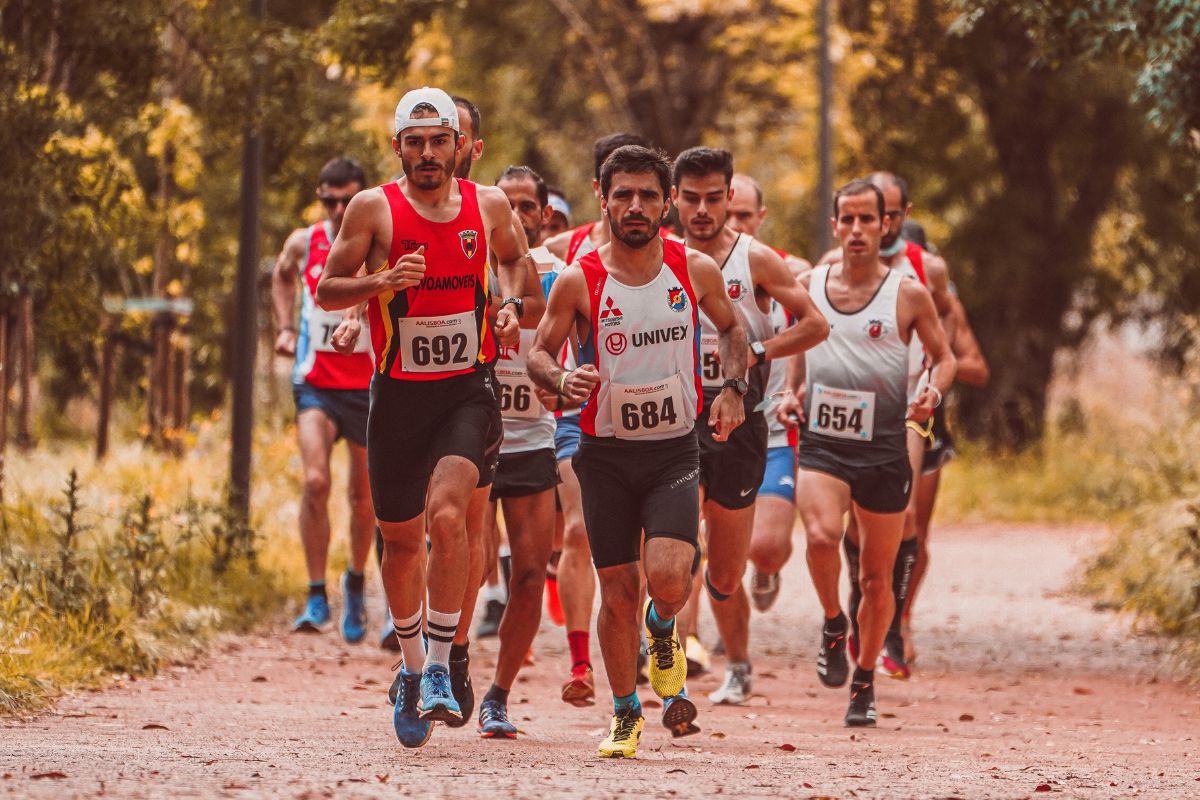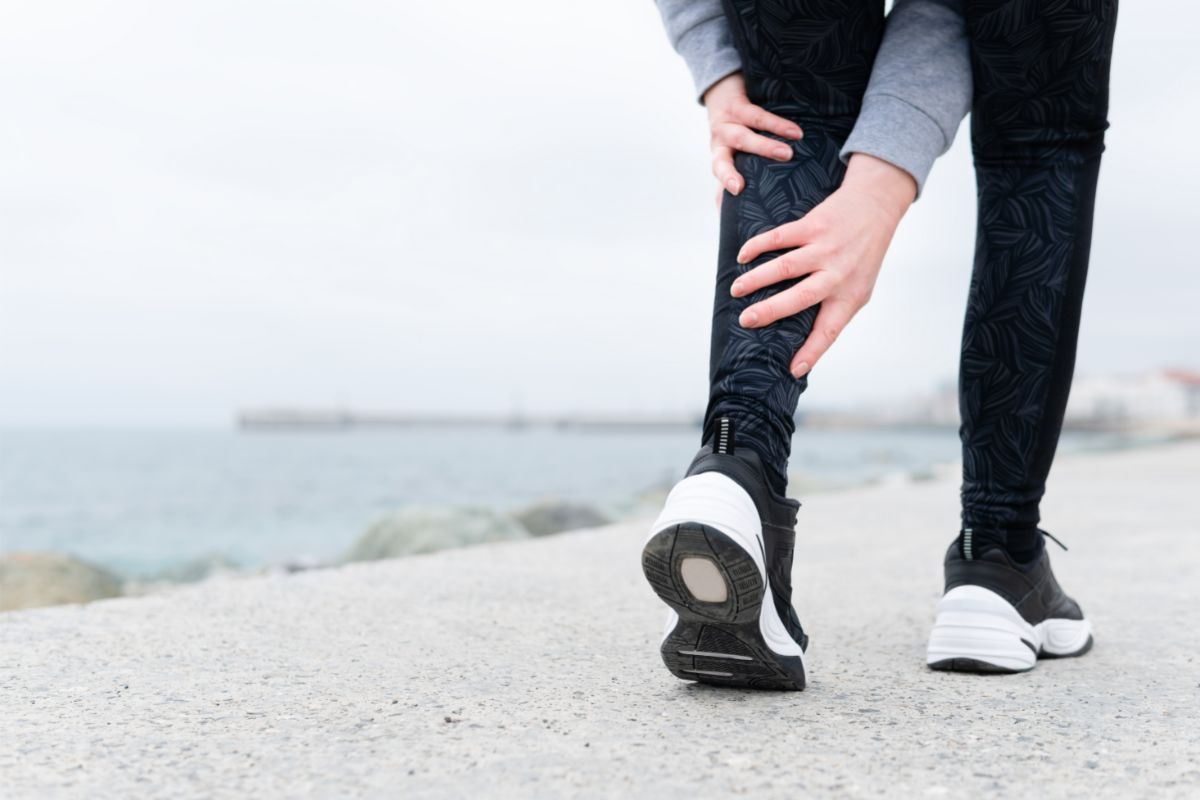If you can feel soreness along the inner part of your shinbone, tenderness, or can even see mild swelling in your lower leg, the chances are you’re experiencing shin splints.
The fact you find yourself here would suggest you may even know already.

Caused by repetitive pressures from jumping and running, shin splints are a nasty injury that causes a lot of discomfort and a massive drop in performance, especially in runners.
However, there are specific exercises we can do in an effort to combat the pain and reduce symptoms.
Today, we’ll show you the best exercises you can do if you’re a runner suffering from shin splints.
If you want to do all you can to eliminate symptoms and get back to your best, make sure you follow along!
Why Do You Have Shin Splints?
Before we show you the best exercises to combat shin splints, let us show you why you might be suffering in the first place.
Millions of runners all around the world suffer from this painful condition.
Technically referred to as medial tibial stress syndrome, shin splints, like most running injuries, occur when your training exceeds your body’s tolerance.
If no changes are made, shin splints can then develop into a condition known as bone stress injury.
Contrary to popular beliefs, your shin splints won’t be caused by a muscle imbalance or pronation. It’s most likely the result of too many miles and not enough rest.
The best thing you can do to avoid shin splints and get over them is to primarily focus on developing your body to deal with your training load and strengthen your leg tissues.
What Can We Do To Fix Shin Splints?
Sadly, there are no quick fixes when it comes to recovering from shin splints. You need to take time to strengthen the muscles in your lower leg.
However, you are lucky in the sense that there are 3 excellent exercises you can perform 3 times a week in order to develop and become stronger than you’ve ever been.
In fact, the setback of shin splints could end up making you a much better runner. By strengthening your shins and calves, you will be able to run further than before.
We’ll now show you the three best exercises runners can perform to keep shin splints under control.
Ankle Inversions With Resistance Bands
The first exercise you need to perform is ankle inversions. You’ll need resistance bands to carry out this exercise effectively.
Sitting on the floor, stretch one leg out and keep the other tucked in.
Place a resistance band at the end of the leg sticking out. Attach the other end of the resistance band to a heavy object that won’t move.

Now, keeping your foot in place, push your foot in the opposite direction to the band. After doing this 10 times, switch legs.
This stretch works wonders because it directly targets your pain. Loading the tendons and muscles in your inner shin helps build tolerance.
Standing Soleus Raises
Next, we have standing soleus raises. For this exercise, you simply need yourself.
Standing up straight, take half a step back.
Making sure you keep all your weight evenly distributed, you should now start to slowly bend your knees, sinking down into the ground.
You should be able to feel the stretch in the back of your leg. Continue to lower yourself using your hips to deepen the stretch further.
Hold the stretch for 30 seconds before then changing legs.
The soleus handles more pressure and load than any other part of the body when running, so training it to be stronger reduces the force that ends up in your shin bone.
Standard Calf Raises
This exercise can be done with or without a barbell. For simplicity, we’ll show you how to do it without one.
Standing on a yoga mat, raise your heel slowly while keeping your knees extended. At the top of the stretch, pause for one second.
You should hold this position for as much on the tip of your toes as possible.
To return to the starting positions, simply lower your heels.
This exercise increases your body’s training capacity, strengthening your gastrocnemius. Increasing muscle strength prevents injury and keeps bones healthy.
How Much Should You Stretch?
At first, you should do these three exercises twice a week. Doing them after a run is the best time to do them. In fact, we’d advise you not to do them on your day off.
You might start to experience the benefits immediately, but if not, stay patient. Never perform the stretches if they hurt either.
Final Thoughts
Shin splints are an uncomfortable condition that negatively impacts running performance. However, symptoms can be reduced by strengthening the muscles and bones in the lower legs.
In fact, most runners find that they can run even further after recovering from shin splints.
In this post, we’ve shown you the three exercises you need to perform if you want to get over shin splints.
Performing the three stretches twice a week after your run will increase muscle strength and reduce the pain you feel, so make sure you give them a try.
- Can Dogs Run Faster Than Humans? (Running With Your Furry Friend) - October 4, 2022
- 10 Doggie Fun Runs You Will Love [Ultimate Guide] - October 4, 2022
- What Are Division Results In Running? - October 4, 2022








